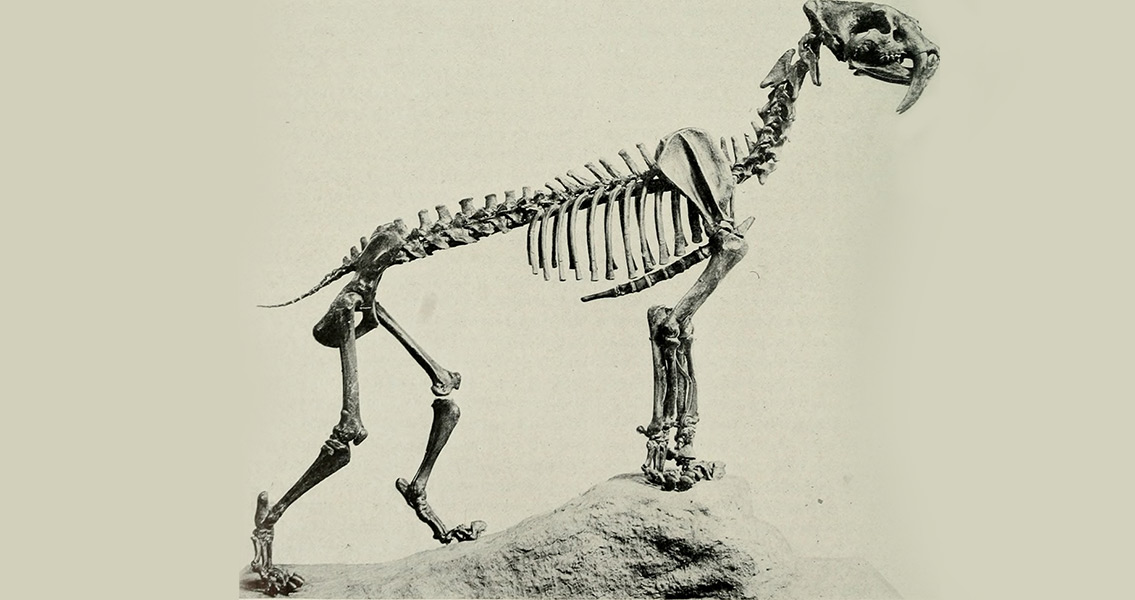<![CDATA[In Central Europe, sometime between 320,000 and 300,000 years ago, our human ancestors may have defended themselves with wooden spears against terrifying, meat-eating hunters like saber-toothed cats, indicating that spears were being used for self-defense as well as hunting. The discovery sheds new light on the relationship between beasts of prey and early humans. It seems likely that early humans would have encountered saber-toothed cats and other large predators at Schöningen (which at the time was the bank of a shallow lake). In that situation, all a hominid could really do was grab whatever was available, his spear for instance, and defend himself. In this context, the Schöningen spears have to be regarded as weapons for defense in addition to hunting - something which was vitally important 300,000 years ago for human survival in Europe. Between 2011 and 2013, a team of researchers led by paleontologist Jordy Serangali from the University of Tübingen in Germany found five teeth plus a partial leg bone belonging to two different saber-toothed cats (each weighing roughly 200-kilograms) at the Schöningen open-cast coal mine in north-central Germany, a site where researchers had previously unearthed ancient wooden spears. As reported recently in the Journal of Human Evolution, researchers have proposed that whatever hominid species made the spears they must have also used them to defend themselves against attacks by these cats and other predators as well, in addition to using them for hunting. The teeth from one of the saber-toothed cats, found in the same stratum and approximately 100 meters from where the spears had been discovered, had limited signs of wear indicating that the animal was relatively young. Scrapes, pits and other marks on the leg bone from an adult male cat which was also found in the same sediment layer as the spears has lead researchers to conclude the bone was used by hominids as a hammer to make stone tools. It was during previous excavations at the same site between 1994 and 1999 that researchers discovered eight wooden spears (both in pieces and complete) with sharpened points that could have been thrown at targets. One incomplete wooden shaft might have been a spear and another may have been a spear, or lance, only suitable for stabbing a target. The horse remains discovered adjacent to the spears suggested that hominids used the 2- to 2.5-meter-long instruments to hunt these and other wild animals. Exact replicas have been made of the spears, and it's been demonstrated that they can only be thrown accurately at targets from about 30 to 40 meters away, a distance a lion, for example, can cover in just a few seconds. According to archaeologist John Shea of New York's Stony Brook University, if the goal was to chase off a large carnivore, bouncing a rock off its head would have been much easier. This suggests that spears like the ones found at Schöningen may only have been weapons of last resort for hominids threatened by big predators.]]>
Early Humans Used Spears Against Saber-tooth Cats
